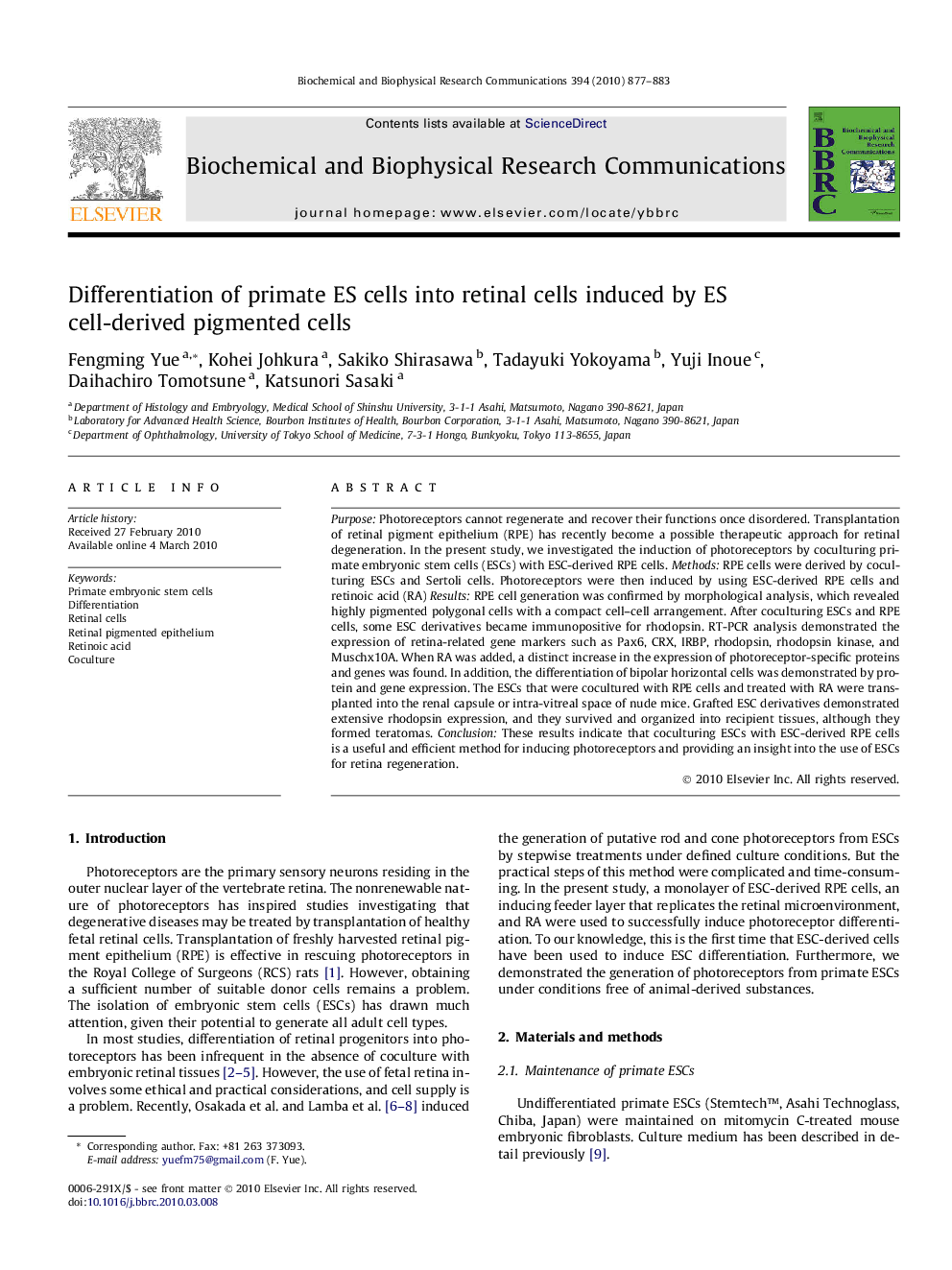| Article ID | Journal | Published Year | Pages | File Type |
|---|---|---|---|---|
| 1931768 | Biochemical and Biophysical Research Communications | 2010 | 7 Pages |
Purpose: Photoreceptors cannot regenerate and recover their functions once disordered. Transplantation of retinal pigment epithelium (RPE) has recently become a possible therapeutic approach for retinal degeneration. In the present study, we investigated the induction of photoreceptors by coculturing primate embryonic stem cells (ESCs) with ESC-derived RPE cells. Methods: RPE cells were derived by coculturing ESCs and Sertoli cells. Photoreceptors were then induced by using ESC-derived RPE cells and retinoic acid (RA) Results: RPE cell generation was confirmed by morphological analysis, which revealed highly pigmented polygonal cells with a compact cell–cell arrangement. After coculturing ESCs and RPE cells, some ESC derivatives became immunopositive for rhodopsin. RT-PCR analysis demonstrated the expression of retina-related gene markers such as Pax6, CRX, IRBP, rhodopsin, rhodopsin kinase, and Muschx10A. When RA was added, a distinct increase in the expression of photoreceptor-specific proteins and genes was found. In addition, the differentiation of bipolar horizontal cells was demonstrated by protein and gene expression. The ESCs that were cocultured with RPE cells and treated with RA were transplanted into the renal capsule or intra-vitreal space of nude mice. Grafted ESC derivatives demonstrated extensive rhodopsin expression, and they survived and organized into recipient tissues, although they formed teratomas. Conclusion: These results indicate that coculturing ESCs with ESC-derived RPE cells is a useful and efficient method for inducing photoreceptors and providing an insight into the use of ESCs for retina regeneration.
